Design Examples
We start from zero
So far I've been looking for, buying, reading or studying books about the design and construction of electric guitars. Four years ago I realized that I could no longer sort all of my notes, ideas and sketches and that it was time to collect only the most important things. And then I developed a system that consists in measuring parameters in coordinates and recording them systematically. The measured coordinates of the "support points" - "control points" - contain enough information to recognize the contour and functional details of a guitar. By combining coordinate values, different guitar shapes can also be "crossed" or compared with one another.
I have summarized all of these considerations in 216 pages of my first english book "Guitar Shapes Navigator"
The drawings can easily be enlarged to a size of 1:1 (we measure exactly the tile size of the drawing in the book = approx. 30 mm, then the enlargement factor is 100 mm: 30 mm = 3.333).
The book contains twenty grid drawings of the most popular types of guitar bodies:
Classic pattern
When designing your own shapes for the guitar body and headstock, given a tried and tested guitar type, it is safest to stick to the outline boundaries as much as possible.
The Stratocaster is a suitable shape that combines the symmetry of the body in the part under the right hand and the asymmetry (offset) around the upper positions of the fingerboard.
The asymmetrical Stratocaster head with tuning machines in a row perfectly complements the body offset. The outline of the headstock does not have to stick to a classic original.
Ibanez RGA and Jackson hockey peghead are an example.
Twenty familiar faces
Because some shapes of guitar bodies are extremely large (Explorer, Flying V) some are slender (Telecaster, Les Paul Junior DC), the large bodies in the drawings are more small. As a result, their tiles are noticeably smaller. For enlargement to the original size of 1: 1, however, the following still applies: The original 1:1 tiles are always 100 x 100 millimeters.
Twenty and one headstocks to choose from
Like the outlines of the bodies, the contours of the heads are related to a zero point on the center of the front edge of the nut at the beginning of the fingerboard. If the neck has a zero fret, the zero point lies in the middle of the crown of the zero fret.
All head drawings in the book "Guitar Shapes Navigator" have a table of CP - checkpoints attached.
Positions of other details can be read as needed by adding a centimeter or millimeter raster.

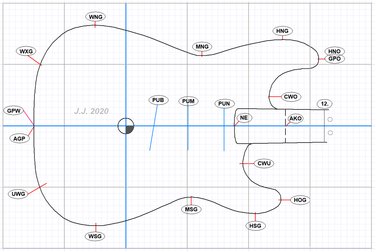
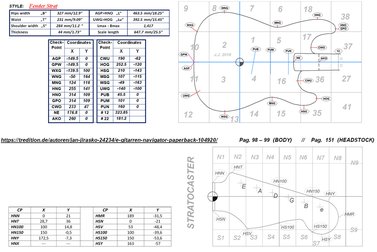
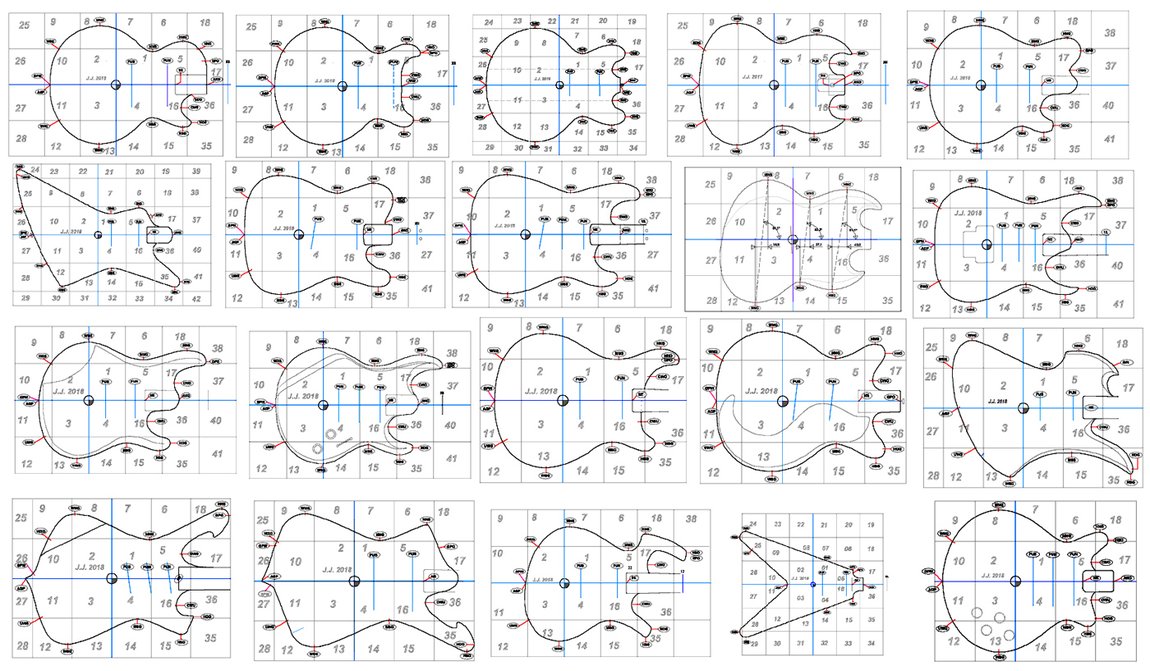
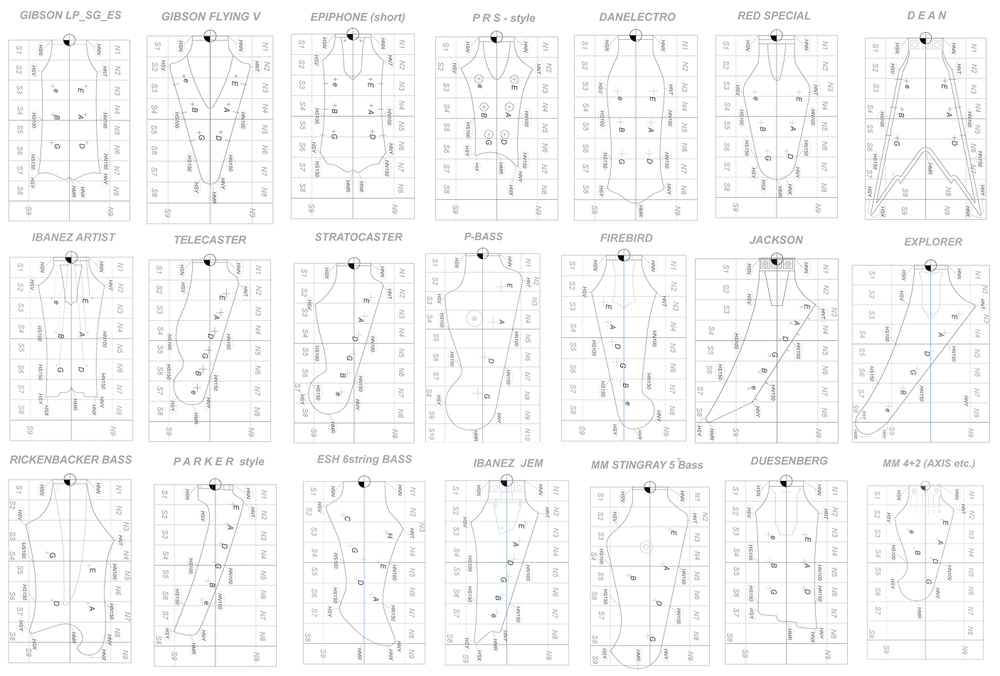
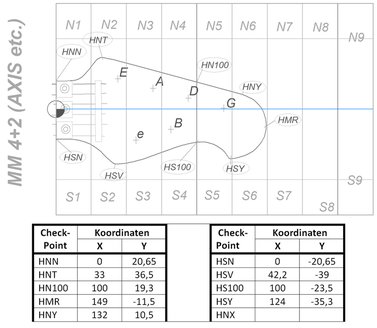
Comments (0)
No comments found!